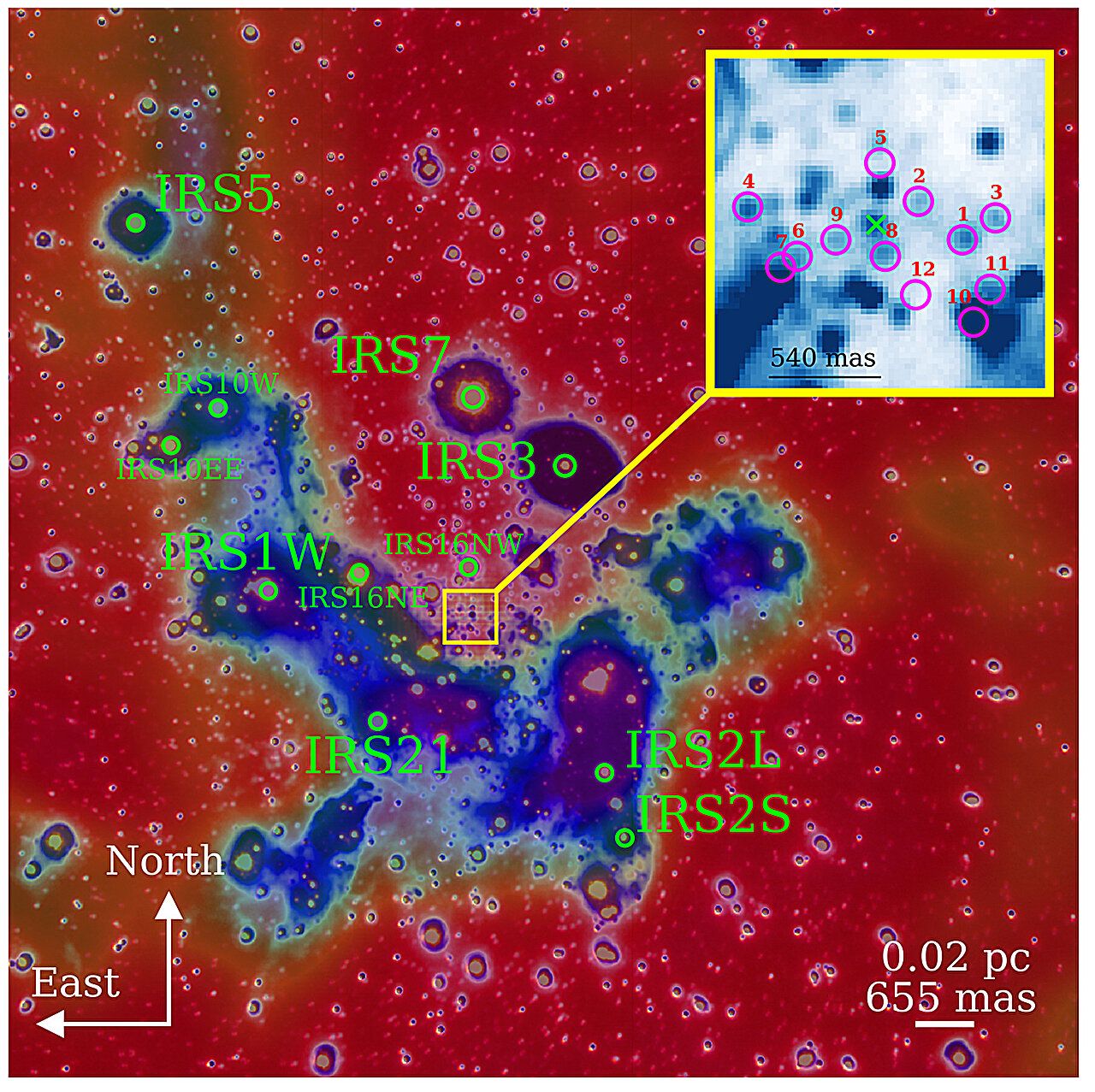A surprising discovery near the supermassive black hole of our galaxy
Follow us on Google News (click on ☆)

Multi-wavelength map of the galactic center observed in the K-band (red) and L-band (blue) with NACO (VLT).
Credit: Astronomy & Astrophysics (2024).
The newly identified objects follow orbits similar to those of already known stars, forming precise patterns around Sagittarius A*. This observation was made through a study titled "Candidate young stellar objects in the S-cluster: Kinematic analysis of a subpopulation of the low-mass G objects close to Sgr A*", published in Astronomy & Astrophysics.
This research, conducted by scientists from several European institutions, challenges existing theories. It was expected to find only old, inactive stars near the black hole, but reality proves more complex with the presence of dynamic young stars, known as S stars.
These S stars, discovered near Sagittarius A*, fascinate researchers with their youth and extreme speed. Their presence in this region remains a major scientific mystery.
Thanks to technological advances and long periods of observation, new questions are emerging. In 2012, the discovery of a mysterious object, initially thought to be a gas cloud being absorbed by the black hole, led to new hypotheses. Today, this object could be a YSO surrounded by a dust cloud.
Researchers are also focusing on a dozen other similar objects in the same area, revealing that they are even younger than the S stars. The YSOs display similar behavior to the S stars, moving at high speed around the black hole, completing an orbit in just a few years.
Dr. Florian Peißker of the Institute of Astrophysics at the University of Cologne emphasizes that the presence of these YSOs forms an organized "stellar constellation," despite an appearance of chaos. The black hole seems to impose a precise orbital structure on the surrounding stars, defying scientists' expectations.